13 Rare and Colorful Animals That Look Straight Out of a Painting
The world is home to animals so colorful and unique, they seem almost otherworldly. These creatures often boast hues that would be impossible to recreate with a paintbrush. From the jungles to the ocean, these stunning beings are nature’s true masterpieces. Their rarity makes them even more fascinating to discover. Continue reading to learn about some of the most extraordinary creatures ever to grace the earth.
This post may contain affiliate links, which helps keep this content free. Please read our disclosure for more info.
Mandarin Fish
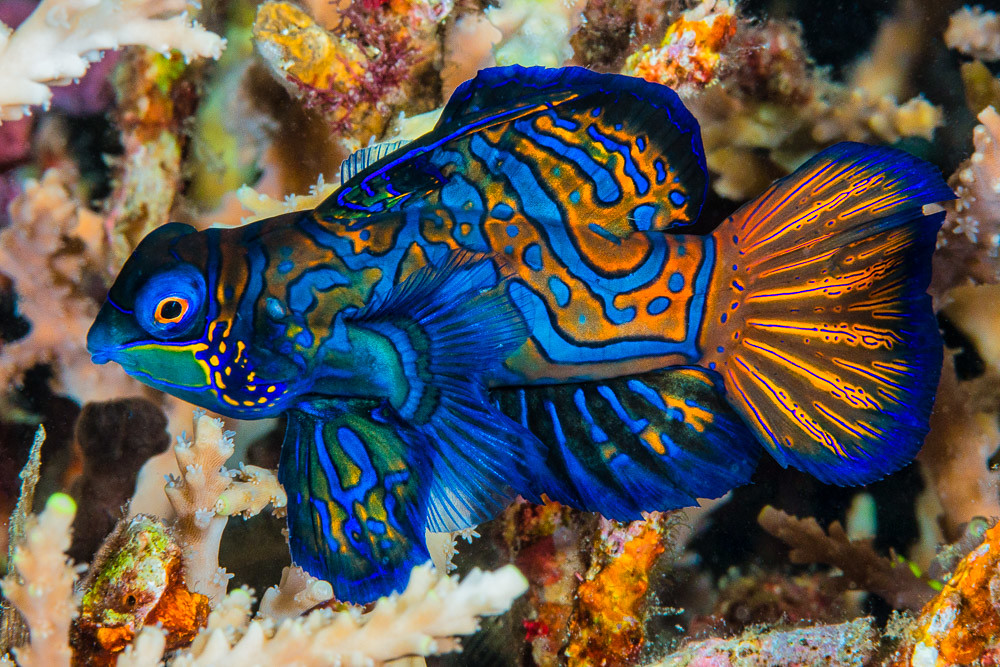
The Mandarin fish, also known as the Mandarinfish, is a small, vibrant creature that dazzles with its bright blue and orange patterns. Found in the Pacific Ocean, this fish is highly sought after for its unique and colorful appearance. Its colors serve as a form of protection, as the vibrant hues can deter predators. While beautiful, it is also a rare find due to its preference for deep, remote reefs.
Mandarin fish are typically found in coral reefs at depths of up to 50 meters, making them difficult to spot. Their vivid colors are the result of iridescent scales that reflect light, creating an almost glowing effect underwater. These fish are relatively small, reaching only about 7 centimeters in length. Despite their stunning look, they are vulnerable to habitat loss, making their future uncertain.
Poison Dart Frog
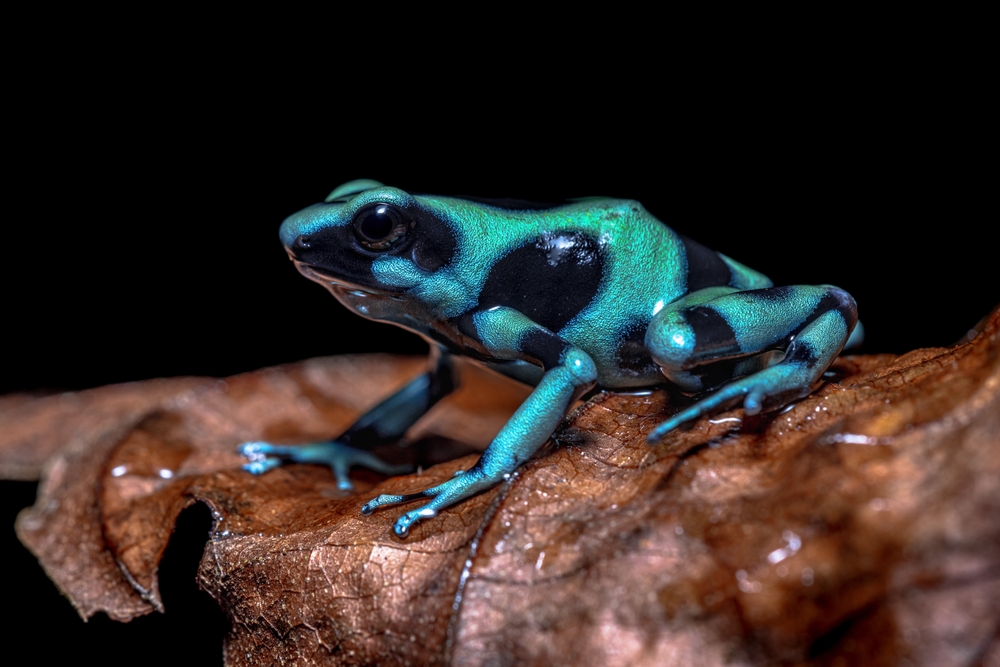
The Poison Dart Frog is one of the most strikingly colorful creatures in the rainforest, with its neon hues ranging from bright yellow to vibrant red. Native to Central and South America, these frogs are famous for their toxic skin, which serves as a defense mechanism against predators. The intense colors warn other animals of their toxicity, a tactic known as aposematism.
While their vivid coloration makes them stand out, the frogs’ bright skin is directly linked to their diet of specific ants and insects in the wild. The different colors and patterns of Poison Dart Frogs serve to identify different species. Despite their beauty, these frogs are endangered due to habitat destruction.
Scarlet Macaw
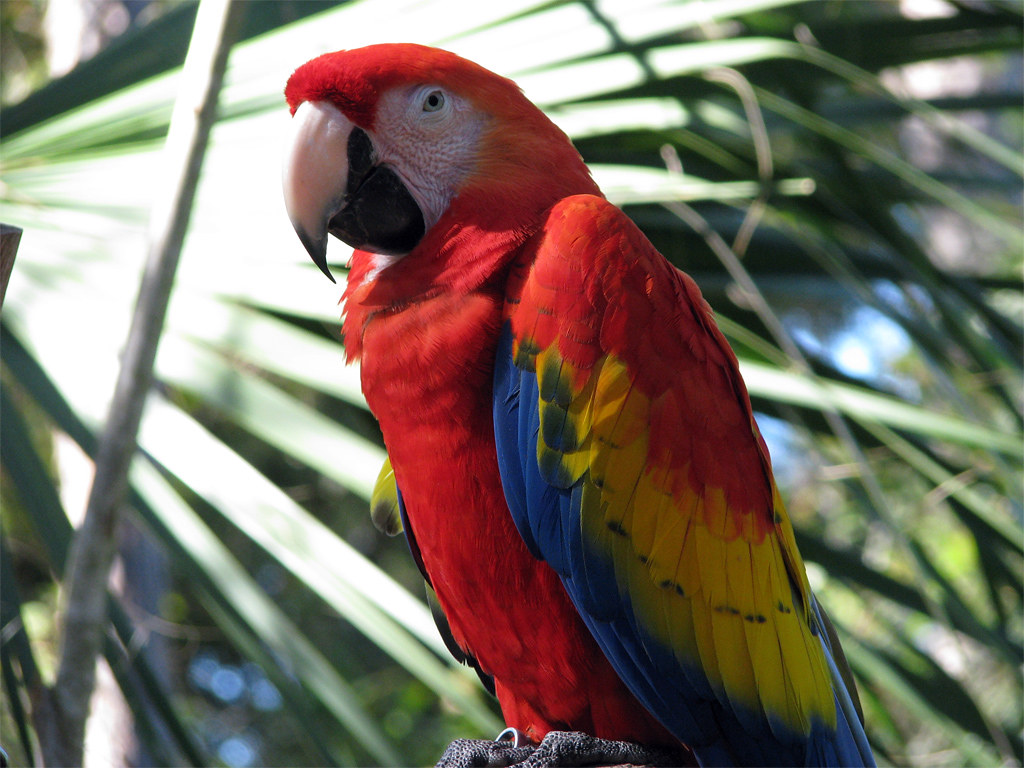
The Scarlet Macaw is a striking bird that features a mix of bright red, yellow, and blue feathers. These large parrots are native to the rainforests of Central and South America. Their colorful feathers are used for communication within their flocks and serve as a display of their health and vitality. The bird’s vivid appearance is one of the most iconic in the animal kingdom.
Scarlet Macaws are rare due to their dependence on specific forest habitats, which are rapidly disappearing. These birds are known for their intelligence and ability to mimic human speech, adding to their appeal. Their colorful feathers are also highly prized in illegal wildlife trade, which has contributed to their endangered status.
Axolotl
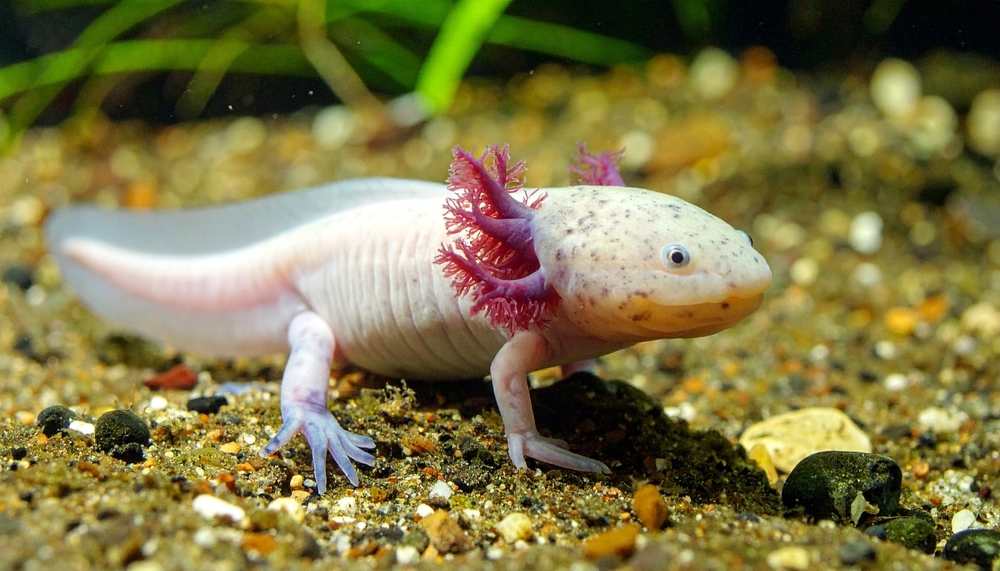
The Axolotl, also known as the Mexican walking fish, is a unique amphibian famous for its ability to regenerate lost limbs and retain its juvenile features throughout its life. This fascinating creature has a soft, pale pink body with feathery gills that make it appear even more striking. Native to lakes near Mexico City, it is highly endangered due to pollution and habitat loss.
What makes the Axolotl even more extraordinary is its natural color variations, with some found in albino, golden, and wild types. These creatures have a mysterious, almost ethereal appearance as they glide through the water. Despite being rare in the wild, Axolotls are popular in scientific research due to their regenerative abilities.
Blue Dragon
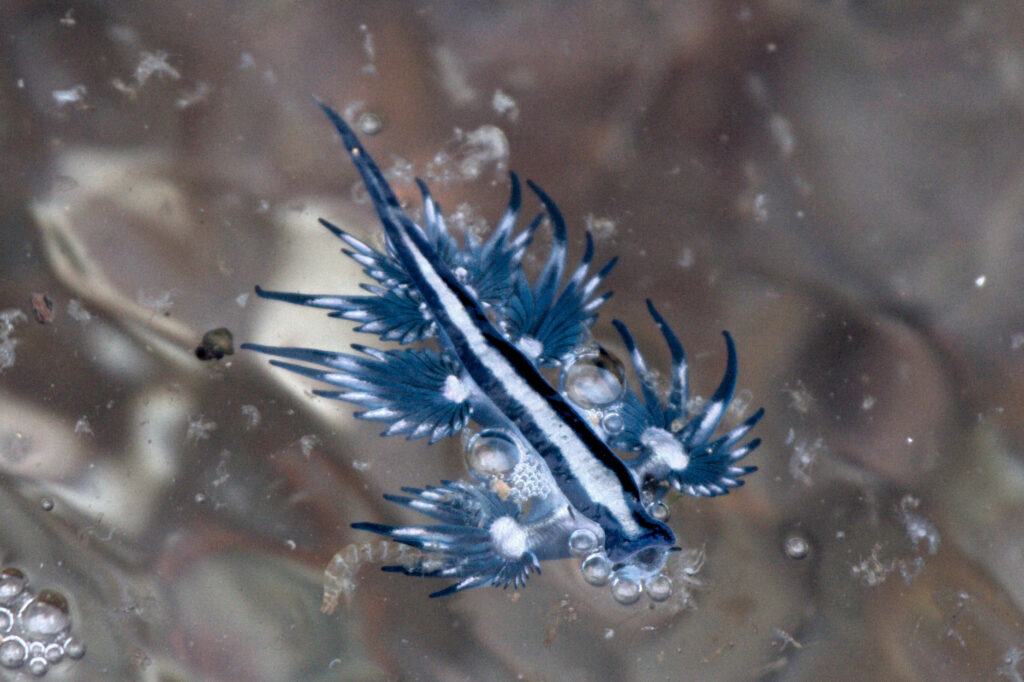
The Blue Dragon, or Glaucus atlanticus, is a small, vibrant sea slug known for its striking blue coloration and elegant appearance. Found in warm ocean waters, this creature has a unique, iridescent body that shimmers with shades of blue and silver. It uses its vibrant colors as a defense mechanism, mimicking the appearance of other dangerous marine animals.
What makes the Blue Dragon truly unique is its ability to absorb the toxins of other sea creatures, making it toxic to predators. This slug floats on the surface of the water, using its radula to feed on small marine creatures. While it is often overlooked, its vivid beauty and rarity make it a wonder of the sea. Unfortunately, the Blue Dragon is increasingly vulnerable due to ocean pollution and climate change.
Kingfisher
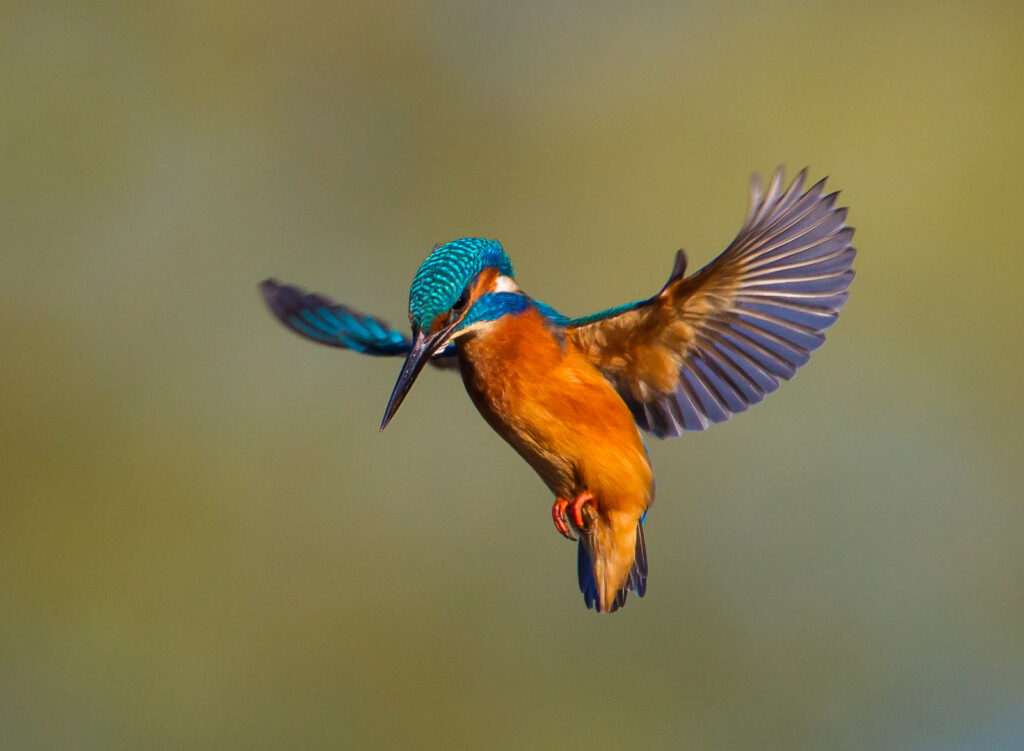
The Kingfisher is a bird known for its radiant blue and orange plumage, making it one of the most beautiful and colorful birds in the world. Found across Europe, Asia, and Africa, these birds are excellent hunters, diving into water to catch fish with precision. Their striking colors help them blend in with their aquatic environments, giving them a natural advantage while hunting.
Despite their beauty, Kingfishers are rare due to habitat destruction, especially in areas where wetlands are drained for agriculture. The bird’s vibrant colors are a result of light reflecting off its specialized feathers, giving it a shimmering effect. The Kingfisher’s swift hunting skills and stunning appearance make it a favorite among birdwatchers. Conservation efforts are important to preserve their habitats and ensure their survival.
Rainbow Lorikeet
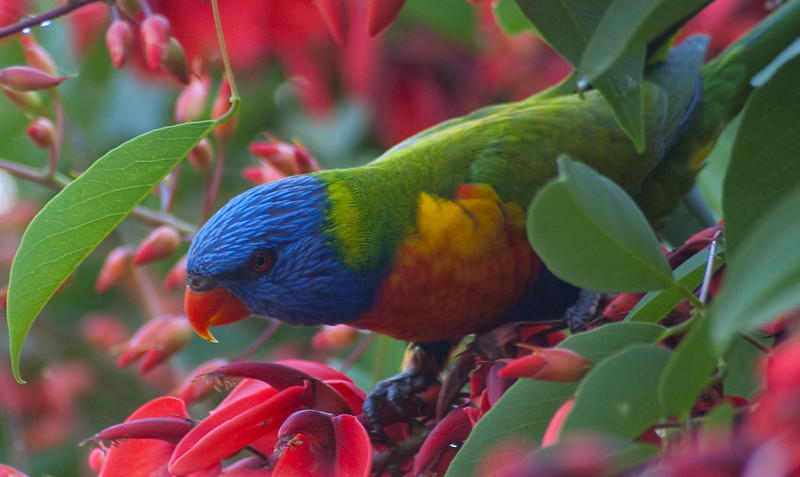
The Rainbow Lorikeet is a small, brilliantly colored parrot native to Australia. Its feathers, a mix of green, blue, yellow, and red, make it look like a living piece of art. These birds are often seen in large flocks, feeding on nectar and fruits from trees, which helps pollinate plants. Their colorful appearance is due to pigments in their feathers and the way they interact with light.
Rainbow Lorikeets are highly social creatures, known for their playful nature and vocalizations. Despite their beauty, they face threats from habitat loss and climate change. These birds are often found in rainforests and coastal areas, where they are becoming increasingly rare.
Mandrill
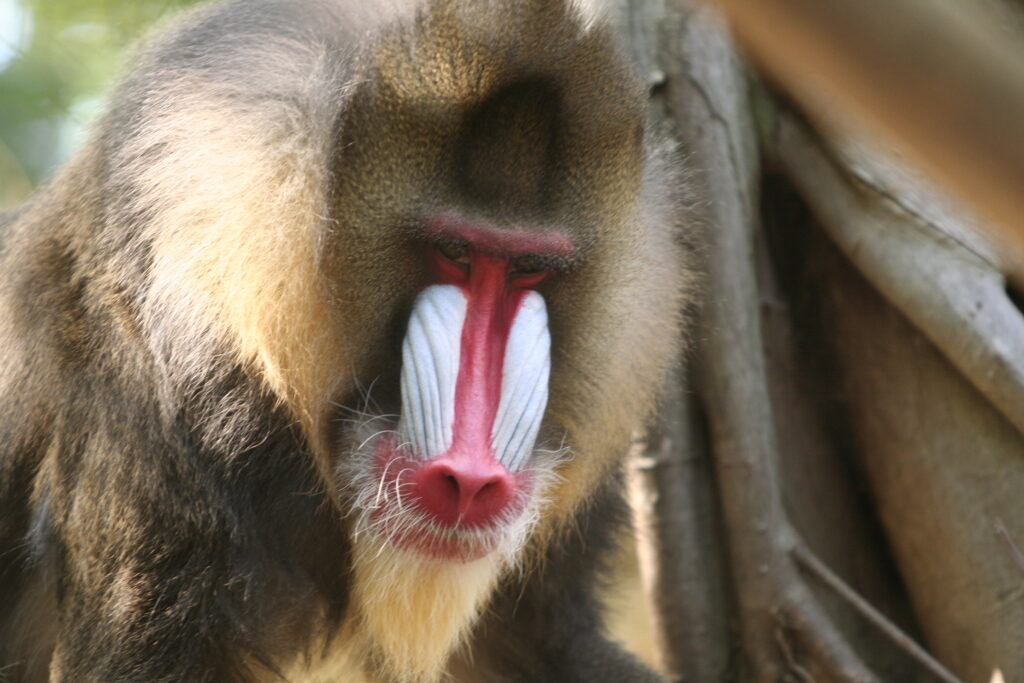
Mandrills are striking primates known for their colorful faces and behinds, featuring a mix of bright blues, reds, and purples. These colors are used for communication within their social groups, helping to indicate dominance and health. Native to the rainforests of Central Africa, Mandrills live in large groups and are known for their intelligence and social behavior.
What makes the Mandrill particularly rare is its limited habitat, which is being rapidly destroyed. Despite their colorful appearance, these animals are vulnerable to poaching and habitat loss. Mandrills are often elusive, making sightings in the wild quite rare. As with many primates, their future depends on concerted conservation efforts to protect their natural environment.
Peacock Mantis Shrimp
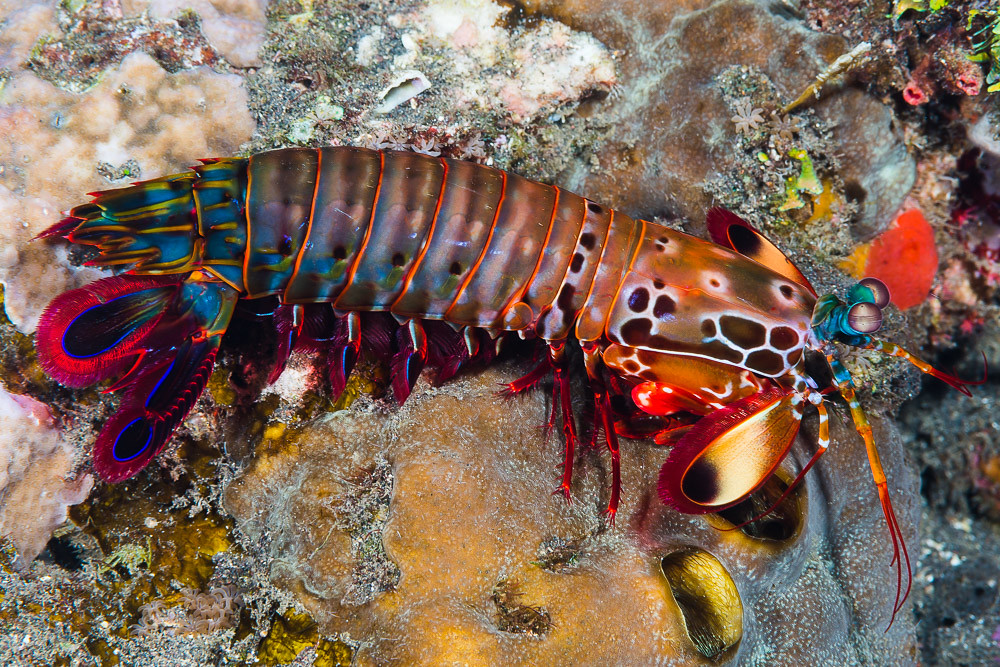
The Peacock Mantis Shrimp is a small marine crustacean that boasts an incredibly colorful body, with hues of green, blue, and orange. Known for its impressive speed and powerful punch, the mantis shrimp uses its vibrant appearance as a form of defense against predators. This species is found in tropical and subtropical waters, particularly around coral reefs.
Despite their beauty, Peacock Mantis Shrimp are elusive and difficult to study due to their quick movements. Their colorful bodies also play a role in mating, with brighter colors signaling a healthier mate. The shrimp’s powerful strike, capable of breaking glass, makes them a fascinating subject of study for marine biologists. They are rare due to their specific habitat requirements and the threat of ocean pollution.
Quetzal
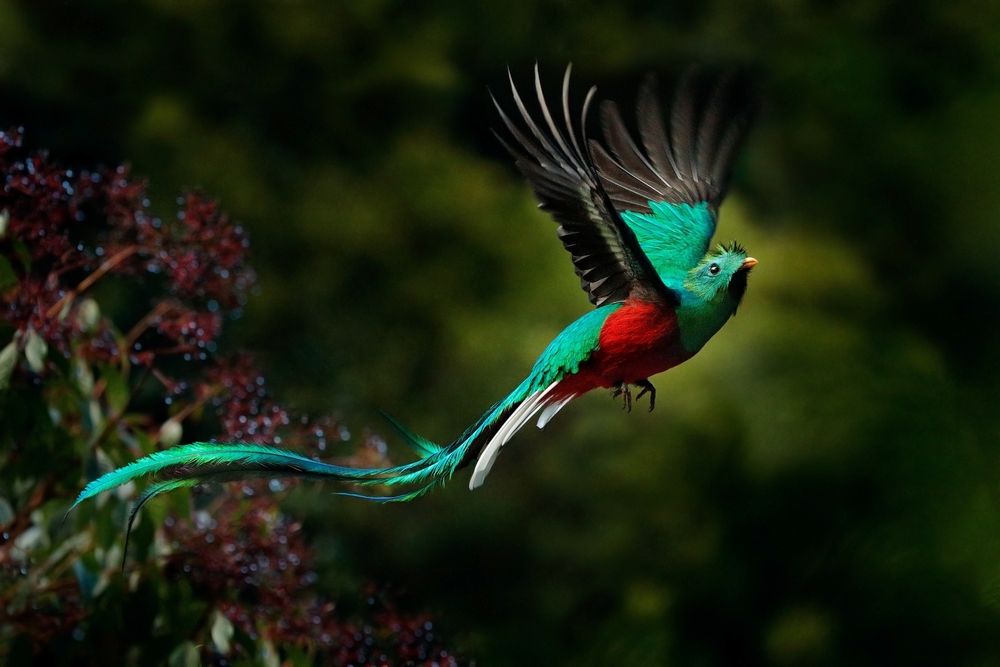
The Quetzal is a bird that is often considered one of the most beautiful in the world due to its brilliant green and red plumage. Native to Central America, the Quetzal is known for its long tail feathers, which are often seen trailing behind it during flight. The bird is a symbol of freedom and has cultural significance in ancient Mayan and Aztec civilizations.
Quetzals are rare due to their specific habitat requirements, primarily living in cloud forests at high altitudes. They are known to be shy and elusive, making sightings in the wild uncommon. Due to habitat destruction and illegal hunting, the Quetzal is considered a near-threatened species. Conservation efforts focus on protecting their habitat and maintaining their populations in the wild.
Electric Blue Gecko
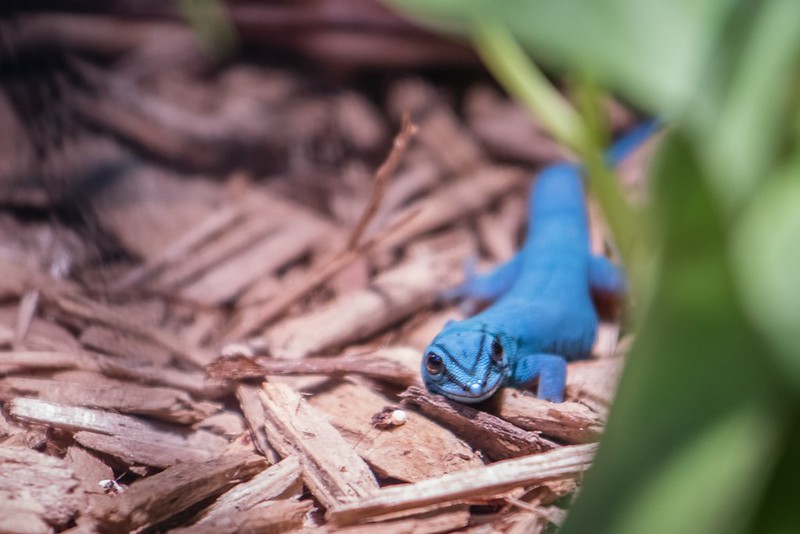
The Electric Blue Gecko is a striking lizard that gets its name from its vibrant, electric-blue coloration. Native to Madagascar, this gecko uses its colorful appearance to attract mates and deter predators. The blue hue comes from a rare pigment in its scales, which is uncommon in the reptile world.
These geckos are rare because their populations are limited to specific areas in Madagascar, and their bright colors make them vulnerable to the pet trade. The Electric Blue Gecko is typically found in dry forests and shrubland, where they blend into their environment. They are currently facing threats from habitat destruction, making them a conservation priority. Their bright blue color and unique appearance make them a truly exceptional species.
Sunset Moth

The Sunset Moth, native to Madagascar, is one of the most colorful moths in the world. Its wings feature a beautiful mix of red, orange, and blue, resembling a sunset sky. This vibrant moth is not just stunning to look at but is also rare due to its limited range and the specific climate it requires to thrive.
The moth’s stunning wings are a result of intricate patterns on its scales, which create the illusion of glowing colors. It is particularly elusive, making sightings in the wild a rare event. The Sunset Moth’s beauty and rarity have made it a prized subject of study for entomologists. Protection of Madagascar’s ecosystems is key to preserving this breathtaking species.
Emperor Dragonfly
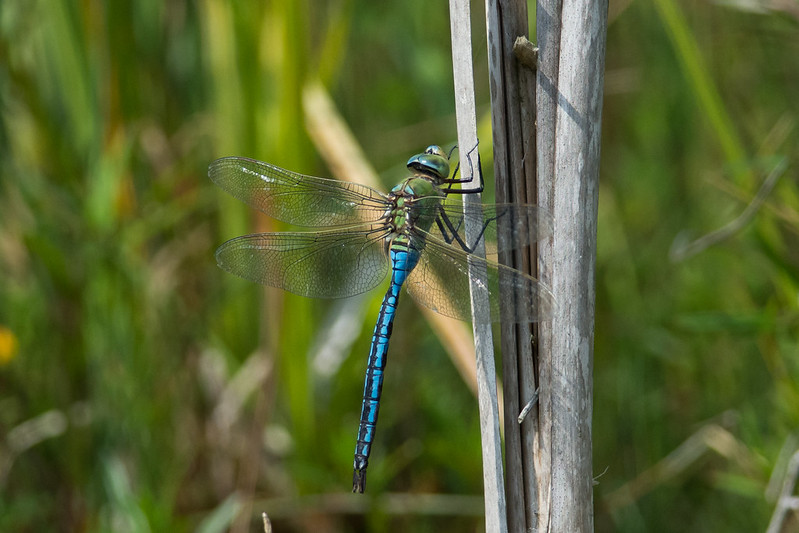
The Emperor Dragonfly is one of the largest and most colorful dragonflies in the world. With its bright blue body and striking green eyes, this insect stands out in the wild. Native to Europe and parts of Asia, the Emperor Dragonfly is a skilled hunter, known for its ability to catch prey mid-flight.
While not as rare as some of the other species on this list, the Emperor Dragonfly’s vibrant colors make it a fascinating creature. Its large wingspan and speed give it an impressive appearance in flight. Habitat loss and climate change pose threats to its population, making conservation efforts important. Despite this, the Emperor Dragonfly remains one of the most admired insects in the world.
This article originally appeared on Avocadu.
